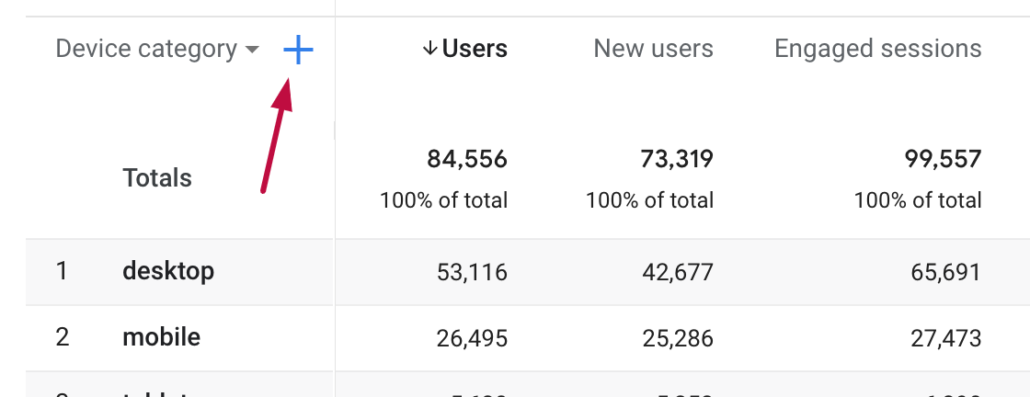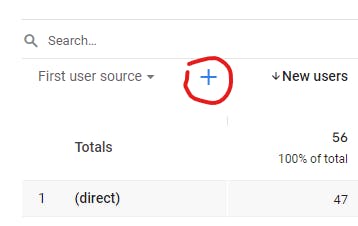The Value of Secondary Dimension in Google Analytics for Your SEO
The Value of Secondary Dimension in Google Analytics for Your SEO
Blog Article
Take Full Advantage Of Reporting Precision With Secondary Measurement in Google Analytics
Understanding exactly how to optimize reporting accuracy with second measurements in Google Analytics can substantially improve the depth of insights stemmed from information evaluation. By incorporating second measurements tactically, marketing experts can discover covert patterns and correlations that may not be right away evident when evaluating primary metrics alone. This nuanced method enables a much more thorough understanding of user actions and project performance, leading the way for more targeted and effective decision-making. The utilization of second dimensions holds the crucial to unlocking a riches of valuable information that can change the effectiveness of digital marketing strategies.
Comprehending Additional Dimensions in Google Analytics
To enhance information analysis and gain deeper insights right into customer habits, comprehending secondary dimensions in Google Analytics is important. Secondary dimensions permit users to segment and further explore information beyond the primary measurement chosen. By incorporating additional dimensions, experts can improve their reports to reveal even more comprehensive info about individual interactions on a website. While the key measurement may display the total number of web page views, adding an additional measurement such as 'source/medium' can supply insights into where the traffic stemmed from. This extra layer of info enables marketing experts to evaluate the performance of various advertising projects or channels in driving website traffic to the site.
Furthermore, comprehending second dimensions is vital for producing more personalized reports tailored to particular service goals. By choosing the right combination of additional and main dimensions, analysts can uncover patterns, fads, and connections that may otherwise remain surprise. This nuanced method to data analysis encourages businesses to make educated decisions based on a comprehensive understanding of customer actions throughout numerous dimensions.

Exactly How to Apply Secondary Measurements
When leveraging secondary dimensions in Google Analytics, the sensible application involves choosing details data criteria to more improve insights beyond the main measurement's scope. To use additional dimensions successfully, start by accessing the record or dataset where you desire to dive much deeper into the data. Within Google Analytics, locate the primary measurement that you are presently analyzing. When identified, click on the dropdown menu classified "Secondary Measurement." This activity will certainly reveal a list of extra parameters that can be contributed to your analysis. Choose the additional dimension that aligns with your logical objectives, such as 'Source/Medium,' 'Gadget Group,' or 'Area.' By selecting a second measurement, you can gain more comprehensive understandings into customer behavior, demographics, or procurement channels. Keep in mind that second measurements aid provide context and granularity to your main measurement information, allowing you to remove even more meaningful and actionable understandings from your Google Analytics reports.
Leveraging Additional Measurements for Insights
Utilizing additional measurements in Google Analytics enables a more extensive analysis of information, using important understandings beyond the primary dimension's scope. By leveraging additional measurements, individuals can dig deeper right into the efficiency metrics of their site or app, discovering surprise patterns and patterns that might not be right away evident when only taking a look at main measurements.
One secret benefit of using second measurements is the ability to section and filter information a lot more exactly. This can aid analysts and marketing professionals better understand the habits of details customer sections, such as brand-new site visitors versus returning visitors, or website traffic coming from various geographic areas.
Furthermore, second measurements enable individuals to compare and contrast different data factors within the same record, providing a more holistic view of efficiency (Secondary Dimension in Google Analytics). As an example, matching my response the key measurement of touchdown pages with secondary measurements like demographics or tools can reveal which pages are most efficient in involving users on different gadgets or from different group teams.
Fundamentally, leveraging second measurements in Google Analytics encourages customers to extract richer insights from their information, causing even more informed decision-making and inevitably, boosted performance.
Ideal Practices for Second Dimensions
When analyzing information in Google Analytics, incorporating secondary measurements efficiently boosts the deepness of insights acquired from the key metrics. Picking relevant second measurements helps in supplying context and a more clear understanding of the data being examined.
Furthermore, it is advised to restrict the number of second dimensions used in a single report to prevent overwhelming the analysis with way too much information. Concentrating on a few crucial secondary measurements at once can result in even more focused and actionable insights. In addition, consider trying out with various combinations of main and additional measurements to uncover one-of-a-kind trends and patterns that may not appear when looking at the data in isolation.
Advanced Evaluation Strategies With Second Measurements
Discovering complex information connections with the calculated application of secondary dimensions can unveil nuanced understandings that raise the deepness of analysis in Google Analytics. By incorporating secondary dimensions with primary information sets, sophisticated evaluation strategies can be utilized to read review extract beneficial info. One such method is associate evaluation, where additional dimensions enable for the segmentation of customers right into teams sharing common attributes. This method enables a much deeper understanding of user behavior patterns gradually, aiding in the recognition of fads and the assessment of advertising and marketing projects' efficiency.
Furthermore, second dimensions can improve the evaluation of conversion paths by offering additional context. Understanding the different touchpoints an individual interacts with prior to transforming can be crucial in enhancing the consumer journey - Secondary Dimension in Google Analytics. By making use of second dimensions to delve into specifics such as website traffic resources or devices utilized, marketing professionals can tailor strategies to target high-converting networks effectively
Verdict

To boost data evaluation and gain deeper insights right into user behavior, comprehending secondary dimensions in Google Analytics is critical - Secondary Dimension in Google Analytics. Second dimensions enable individuals to segment and additionally explore data past the primary measurement chosen. While the key dimension may display the total number of page sights, adding a second dimension such as 'source/medium' can offer understandings into where the web traffic stemmed from.When leveraging secondary measurements in Google Analytics, the useful application includes selecting certain information parameters to further improve insights beyond the main measurement's scope. Bear in mind that second dimensions help offer context and granularity to your main measurement data, enabling you to draw out even more significant and workable insights from your Google browse around this site Analytics reports
Report this page